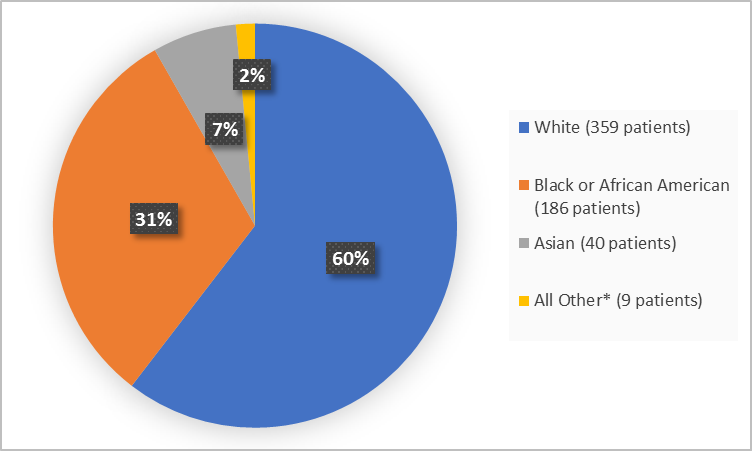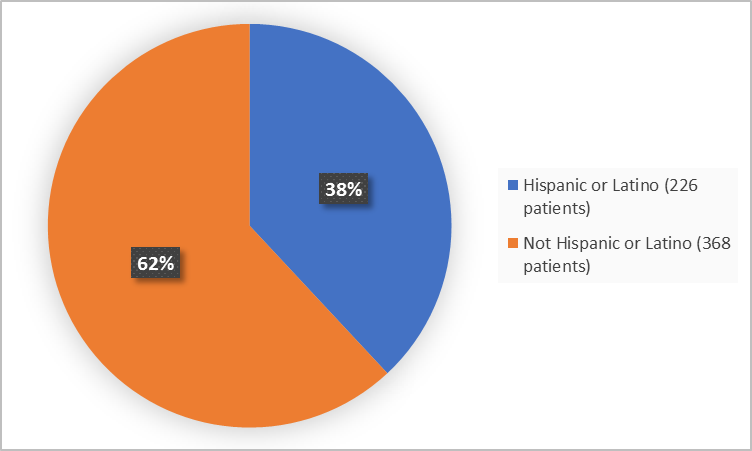A new DRUG TRIALS SNAPSHOT is now available.

Drug Trial Snapshot: PIZENSY
PIZENSY is used to treat a type of constipation called chronic idiopathic constipation (CIC) in adults.
Idiopathic means that the cause of the constipation is unknown.
PIZENSY is a powder. The content of two packets or bottle caps should be mixed with a common beverage and taken once a day. The content of one packet or bottle cap can be taken once a day if the patient develops persistent loose stools with intake of two packets or bottle caps.
See more Drug Trials Snapshots or contact us with questions at Snapshots@fda.hhs.gov.
PIZENSY (lactitol)
Pi zen’ zee
Braintree Laboratories, Inc.
Approval date: February 12, 2020
Pi zen’ zee
Braintree Laboratories, Inc.
Approval date: February 12, 2020
DRUG TRIALS SNAPSHOT SUMMARY:
What is the drug for?
PIZENSY is used to treat a type of constipation called chronic idiopathic constipation (CIC) in adults.
Idiopathic means that the cause of the constipation is unknown.
How is this drug used?
PIZENSY is a powder. The content of two packets or bottle caps should be mixed with a common beverage and taken once a day. The content of one packet or bottle cap can be taken once a day if the patient develops persistent loose stools with intake of two packets or bottle caps.
What are the benefits of this drug?
More patients who received PIZENSY experienced an increase in the number of complete spontaneous bowel movements (CSBMs) to at least 3 bowel movements per week than those who received placebo.
Were there any differences in how well the drug worked in clinical trials among sex, race and age?
- Sex: PIZENSY worked similarly in men and women.
- Race: PIZENSY worked similarly in White and Black or African American patients. The number of patients in other races was limited; therefore, differences in response among all races could not be determined.
- Age: PIZENSY worked similarly in patients younger than 65 years and 65 years or older.
What are the possible side effects?
The most common side effects of PIZENSY are upper respiratory infections, gassiness, diarrhea, increased blood creatinine phosphokinase (a type of enzyme), belly distention and increased blood pressure.
Were there any differences in side effects among sex, race and age?
- Sex: The occurrence of side effects was similar in men and women.
- Race: The occurrence of side effects was similar in White and Black or African American patients. The number of patients in other races was limited; therefore, differences in side effects among all races could not be determined.
- Age: The occurrence of side effects was similar in patients younger than 65 years and 65 years or older.
WHO WAS IN THE CLINICAL TRIALS?
Who participated in the clinical trials?
The FDA approved PIZENSY based on evidence from a clinical trial (Trial 1/ NCT02819297) of 594 patients with CIC. This trial was conducted in the USA.
The FDA also considered other supportive evidence including data from Trial 2 (NCT02481947) which compared PIZENSY to previously approved drug (lubiprostone) for CIC, and Trial 3 (NCT02819310) in which patients used PIZENSY for one year as well as data from published literature.
The figure below summarizes how many men and women were in the clinical trial 1.
Figure 1. Demographics by Sex
FDA Review
Figure 2 below summarizes the percentage of patients by race in the clinical trial 1.
Figure 2. Demographics by Race
*Includes American Indian or Alaska Native and Other
FDA Review
FDA Review
Figure 3 summarizes the percentage of patients by age enrolled in the clinical trial 1.
Figure 3. Demographics by Age
FDA Review
Figure 4. Demographics by Ethnicity
FDA Review
How were the trials designed?
The benefit and side effects of PIZENSY were evaluated in a clinical trial (Trial 1) of 594 patients with CIC. In this trial, patients received treatment with either PIZENSY or placebo once daily for 6 months. Neither the patients nor the health care providers knew which treatment was being given until after the trials were completed.
Based on the information from their electronic diaries, patients were evaluated for improvement in CSBMs during the first 12 weeks of the treatment.
The FDA considered additional data from 2 more trials for supportive evidence.
In the second trial (Trial 2) of three months duration, improvement in CSBMs was used to compare PIZENSY to the drug lubiprostone which was previously approved for CIC. The third trial (Trial 3) was used to collect the side effects in patients treated with PIZENSY for one year.
GLOSSARY
CLINICAL TRIAL: Voluntary research studies conducted in people and designed to answer specific questions about the safety or effectiveness of drugs, vaccines, other therapies, or new ways of using existing treatments.
COMPARATOR: A previously available treatment or placebo used in clinical trials that is compared to the actual drug being tested.
EFFICACY: How well the drug achieves the desired response when it is taken as described in a controlled clinical setting, such as during a clinical trial.
PLACEBO: An inactive substance or “sugar pill” that looks the same as, and is given the same way as, an active drug or treatment being tested. The effects of the active drug or treatment are compared to the effects of the placebo.
SUBGROUP: A subset of the population studied in a clinical trial. Demographic subsets include sex, race, and age groups.
COMPARATOR: A previously available treatment or placebo used in clinical trials that is compared to the actual drug being tested.
EFFICACY: How well the drug achieves the desired response when it is taken as described in a controlled clinical setting, such as during a clinical trial.
PLACEBO: An inactive substance or “sugar pill” that looks the same as, and is given the same way as, an active drug or treatment being tested. The effects of the active drug or treatment are compared to the effects of the placebo.
SUBGROUP: A subset of the population studied in a clinical trial. Demographic subsets include sex, race, and age groups.


























.png)











No hay comentarios:
Publicar un comentario